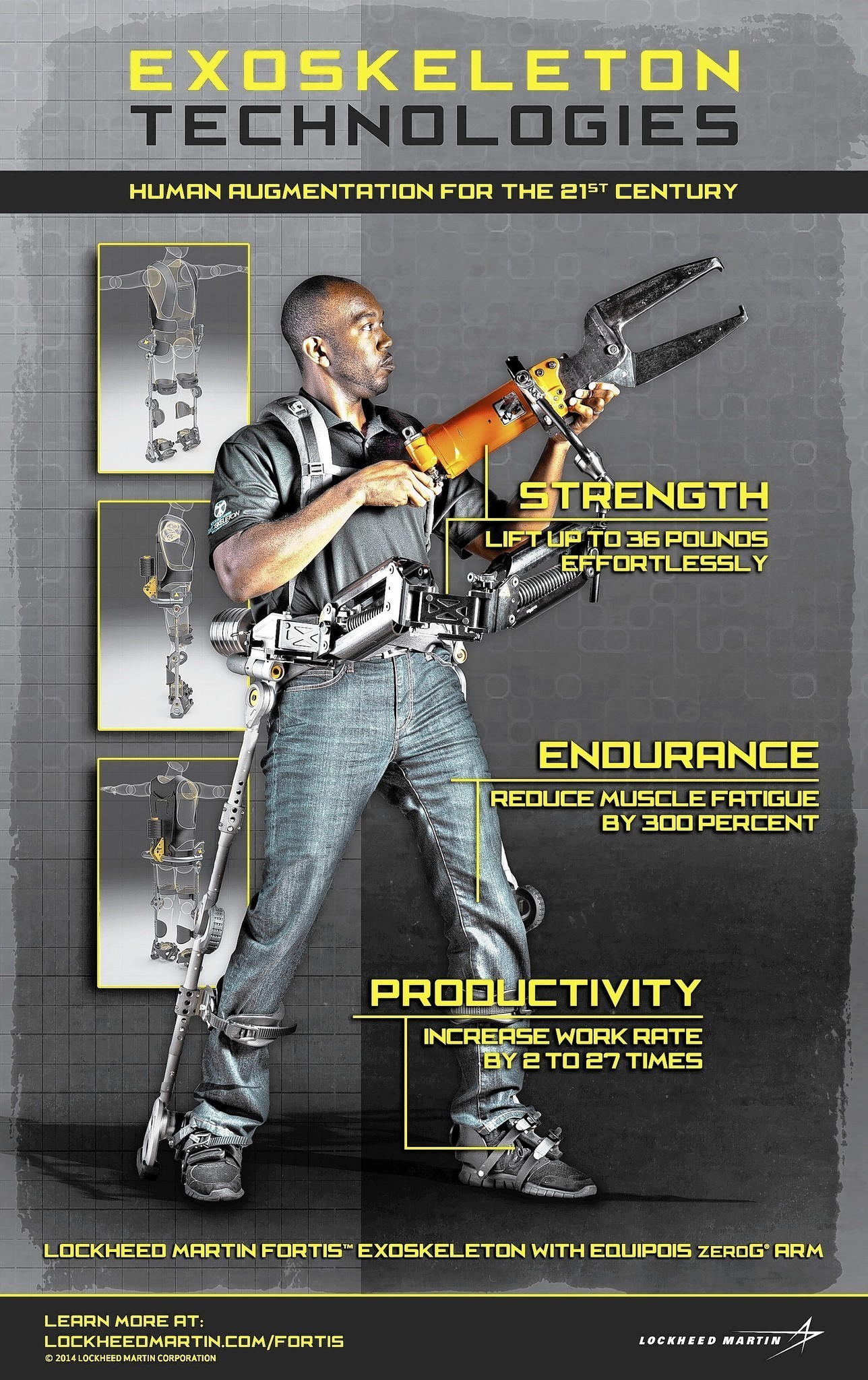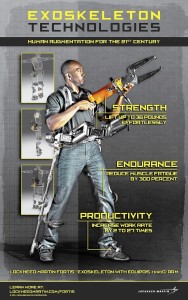Could a Real-life Iron Man Suit be Far Behind?

 For our military to remain combat ready at all times, every vehicle, from helicopters to aircraft carriers, must be diligently maintained. This job requires sophisticated, heavy duty tools which quickly tax the energy of those using them. According to Adam Miller, director of new initiatives for Lockheed Martin, skilled works can only operate these tools for a few minutes before needing to rest.
For our military to remain combat ready at all times, every vehicle, from helicopters to aircraft carriers, must be diligently maintained. This job requires sophisticated, heavy duty tools which quickly tax the energy of those using them. According to Adam Miller, director of new initiatives for Lockheed Martin, skilled works can only operate these tools for a few minutes before needing to rest.
In a bid to remedy the high physical toll of using such equipment, Miller and a team of engineers have designed an industrial-use exoskeleton dubbed FORTIS. The suit, made from aluminum and carbon fiber, weighs about 30 pounds, and follows the contours of the user’s body. It includes fully-articulated joints to allow unhindered movement of the operator, allowing the wearer to move about normally while in the exoskeleton.
To help mitigate the physical wear of industrial work, tools are mounted directly onto FORTIS, which redirects their weight through the joints in the exoskeleton and down to the ground. This alleviates stress on the entire body, allowing workers to wield their tools more efficiently. Initial tests report that the exoskeleton is capable of increasing productivity from between two to 27 times, depending on the tools being used and the task performed. One assessment of FORTIS’s abilities measured the time a worker could use a 16 pound grinder overhead without having to rest. The operator’s performance increased from three minutes of work without the exoskeleton to thirty when FORTIS-equipped – a ten-fold improvement.
The initial process for developing FORTIS was simply observing how humans moved. According to Miller, “You have to look at the biomechanics of the person because it’s not just a stand; it’s really something they can move around in…”. By keeping this fundamental premise in mind, and by studying flaws in other exoskeletons, Miller and his team were able to design an ergonomic piece of equipment for relieving muscle fatigue.
Recently the US Navy purchased two of these exoskeletons, and plans to test their utility further in the coming months.
Take a look at the video below for an overview of this remarkable machine. While you’re watching, ask yourself the question: “Is this the first primitive prototype of the Iron Man suit?”
